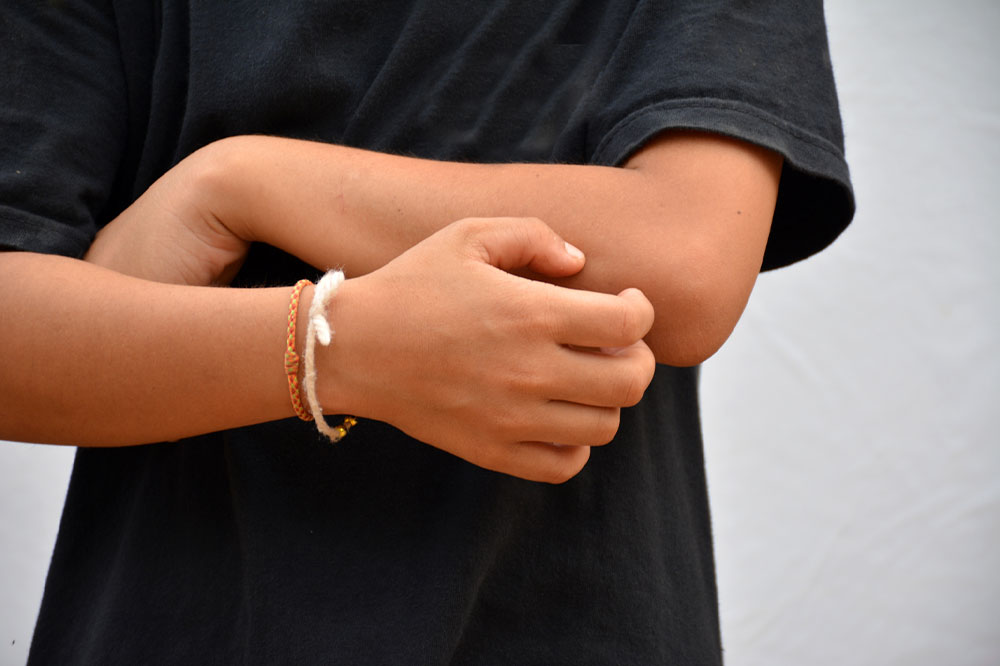Prurigo nodularis – Causes, symptoms, and management

Prurigo nodularis (PN) is an inflammatory skin condition that creates excessively itchy rashes on the arms, legs, upper back, and abdomen. These itchy bumps can interfere with your sleep and mental well-being. The persistent itching leads to the bumps growing and turning hard. PN can appear on its own or be a part of any existing skin condition. Keep reading to learn more about the symptoms, causes, and treatments for prurigo nodularis.
Symptoms
The symptoms of PN vary from patient to patient as this disease is mainly based on skin rashes due to excessive scratching and picking for intense itchiness. These rashes become severe over time as they become hard, crusty, and scaly and vary in color – pink, brown, or black.
According to experts, patients sometimes experience excessive burning, stinging sensations, and temperature variations in the bumps. The condition can lead to psychological issues like anxiety and distress if left untreated.
Causes and risk factors
Even though the exact reasons for PN are unknown, healthcare professionals believe the symptoms manifest due to changes in the functioning of the immune system and nerves under the skin. If you or someone you know is diagnosed with prurigo nodularis, it helps to be aware of the risk factors associated with the condition.
- Age- People above 50 are at a higher risk.
- Skin conditions- People with a history of skin conditions, such as psoriasis and atopic dermatitis, are at an increased risk.
- Underlying health conditions- Several other diseases can contribute to PN. For example, if a patient suffers from kidney failure, Hepatitis C, bacterial disorders, COPD, lymphoma, or liver diseases, they can get affected by prurigo nodularis.
Foods to avoid
Patients with prurigo nodularis must follow a meal plan that excludes foods that can worsen their condition. If you remain careful regarding your food choices, you can easily keep symptoms at bay. The food items you must avoid are–
Meats
Some categories of meat may have an inflammatory impact on your body, such as red meat like beef, lamb, pork, and venison. You should also avoid processed meat options such as hams, sausages, deli, etc. Healthcare professionals encourage patients not to eat such meats as they contain saturated fat that may affect their condition.
Added sugars
Food products sweetened with sugar may negatively impact the condition. Patients must avoid any food item with a high glycemic index. Even fruit juices retain high sugar content sometimes. Health experts advise avoiding sugary beverages and foods like cereals, cakes, candy, etc.
Refined carbohydrates
You should avoid refined carbohydrates such as wheat, pasta, baked goods, white rice, etc. These food items are infamous for their inflammatory properties; therefore, patients with prurigo nodularis must stay away from such foods.
Trans and saturated fats
An inflammatory and itchy disease like prurigo nodularis can become severe if foods containing trans and saturated fats are eaten. For this reason, it is best to avoid food items like fried foods, fatty cuts of meat, processed and baked foods shortenings, and more.
Excess salt
High amounts of salt or sodium in the meal plan can lead to excessive inflammation, worsening PN in the long run. Apart from adding salt manually, you should inspect the food labels and prepare your own food to minimize salt intake.
Safe foods to include in the meal plan
Some food items always leave a positive impact on managing any disease. Some food items are considered healthy for managing inflammatory skin disorders like PN. These food items are known to be anti-inflammatory and may help manage the symptoms. Some healthy food choices to include in the meal plan are listed below.
Fruits
To incorporate their anti-inflammatory benefits in your meal plan, include fresh fruits like apples, grapes, peaches, oranges, lemons, pomegranates, etc.
Vegetables
They are a great source of fiber and other significant vitamins and minerals. One can include anti-inflammatory vegetable options, including leafy green veggies like spinach, kale, and cabbage, cruciferous vegetables like Brussels sprouts, cauliflower, and cabbage, and root vegetables like beets, radishes, and onions to the daily meal plan.
Whole and cooked grains
Whole and cooked grains often reduce inflammation and help manage prurigo nodularis in the long run. Healthy options to include in the meal plan are wholemeal, granary standard bread, brown and wild rice, quinoa, barley, corn, rye, oats, oatmeal, etc.
Management
You can manage prurigo nodularis with the help of therapy. However, it is advised to consult a healthcare professional in this regard. Some therapy options to manage PN are listed below.
- Cryotherapy – This therapy relies on using ultra-cold temperatures on the lesion.
- Phototherapy – This therapy involves the use of UV light.
- Pulsed dye laser – In this therapy, the laser beams kill the affected cells.
You can also imbibe habit reversal therapy, as suggested by healthcare professionals, to resist the urge to scratch the affected area.
Home remedies
Besides these therapy options, you can also use more traditional home remedies to treat PN. Some useful methods that help treat inflammation and itching are listed below.
- Use ice packs to reduce swelling and itching.
- Bathe in lukewarm water with colloidal oatmeal.
- Moisturize affected areas with Vaseline or creams suggested by a health expert.
- For sensitive skin, use soaps without fragrance.
These home remedies are believed to yield positive outcomes for patients dealing with PN. However, it is advisable to consult a healthcare professional before opting for traditional methods to manage symptoms.
Prurigo Nodularis is one of the common skin conditions which affect people. A dermatologist can diagnose the condition by examining the itchy lesions and patches on the skin. Early diagnosis and treatment can help manage the symptoms and facilitate recovery. Avoid social interactions when dealing with the condition and consult a health expert frequently to provide updates about your condition.
















